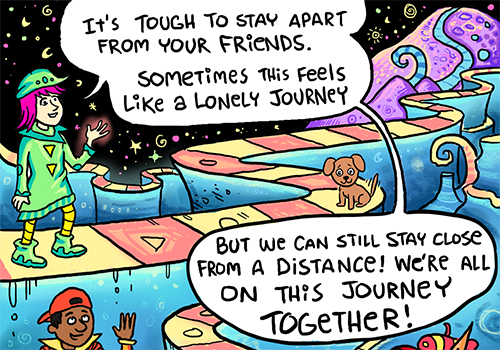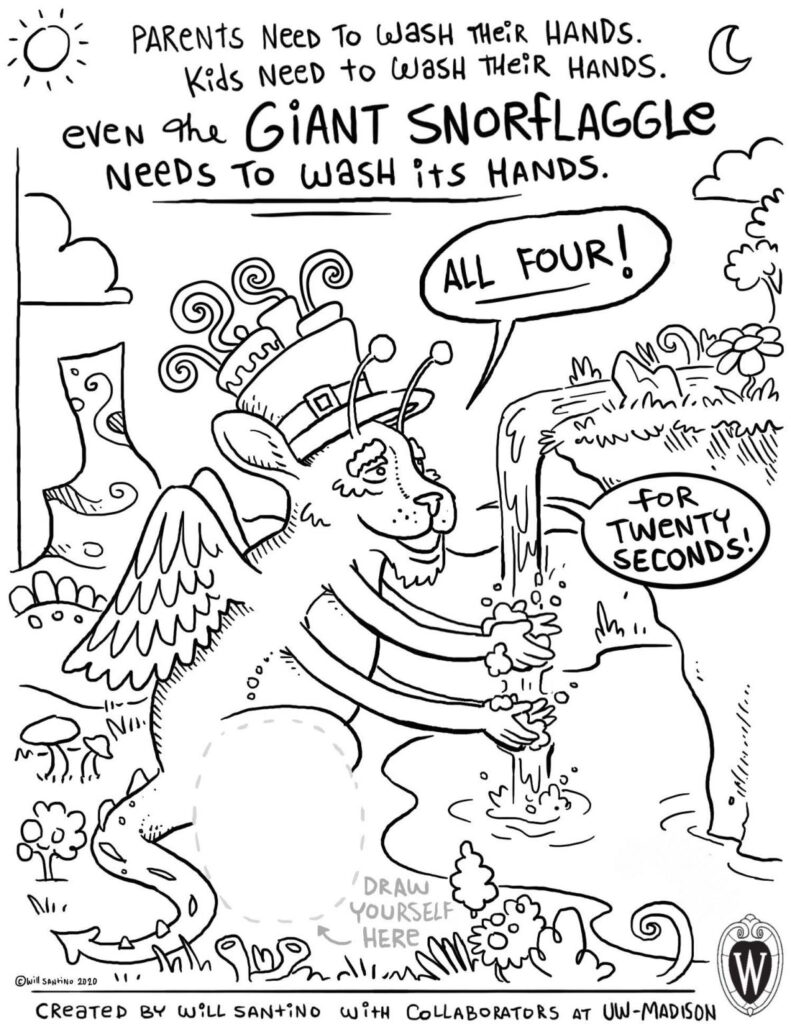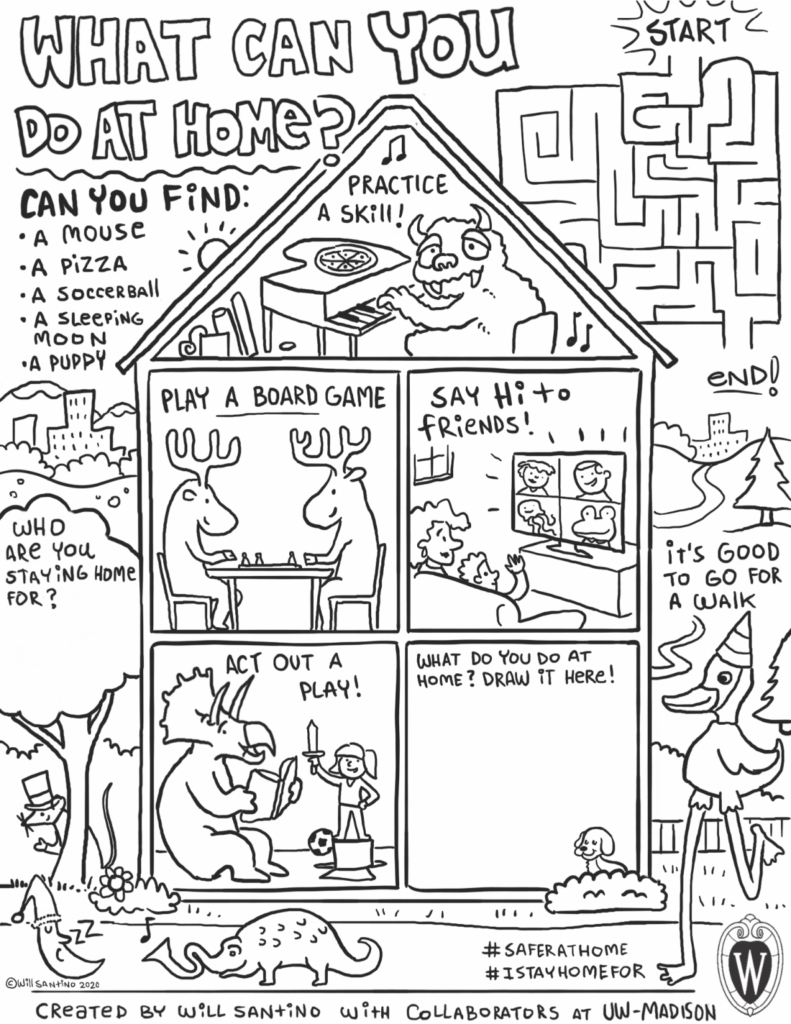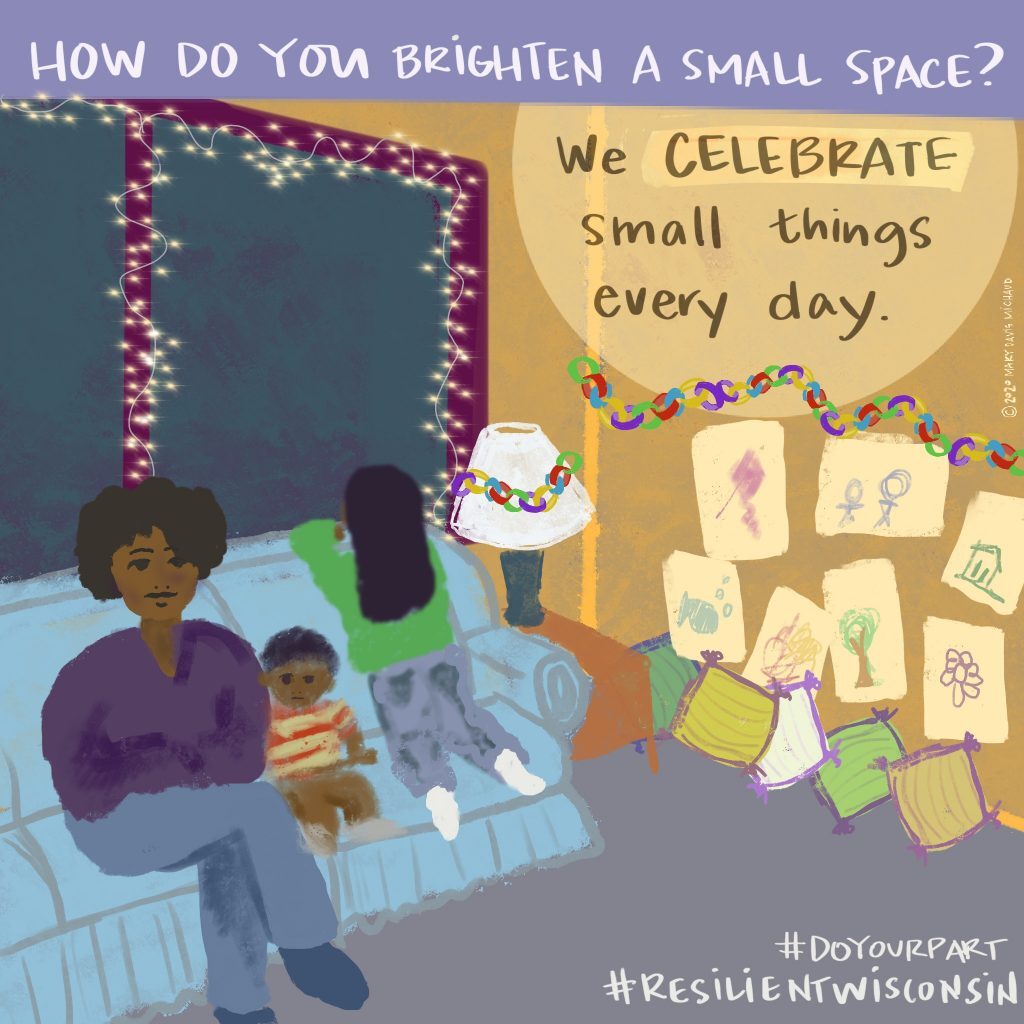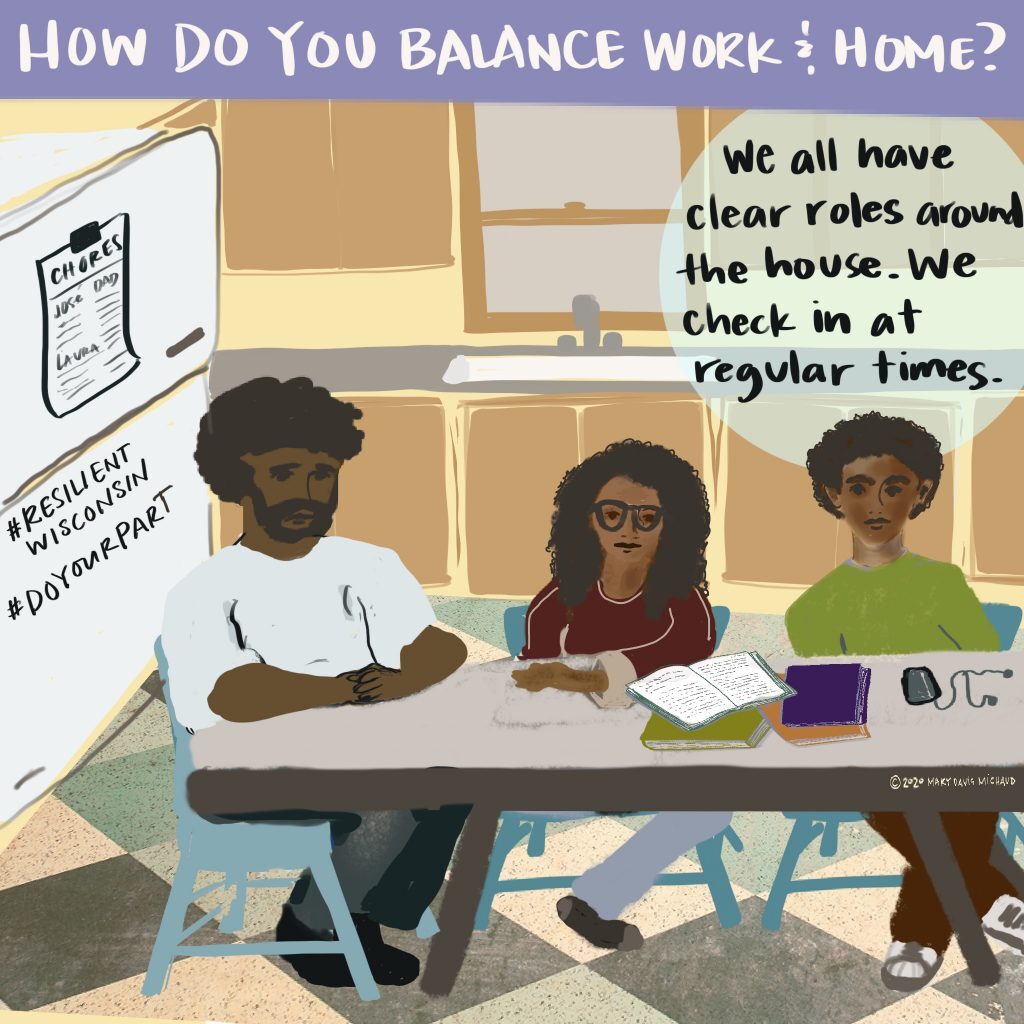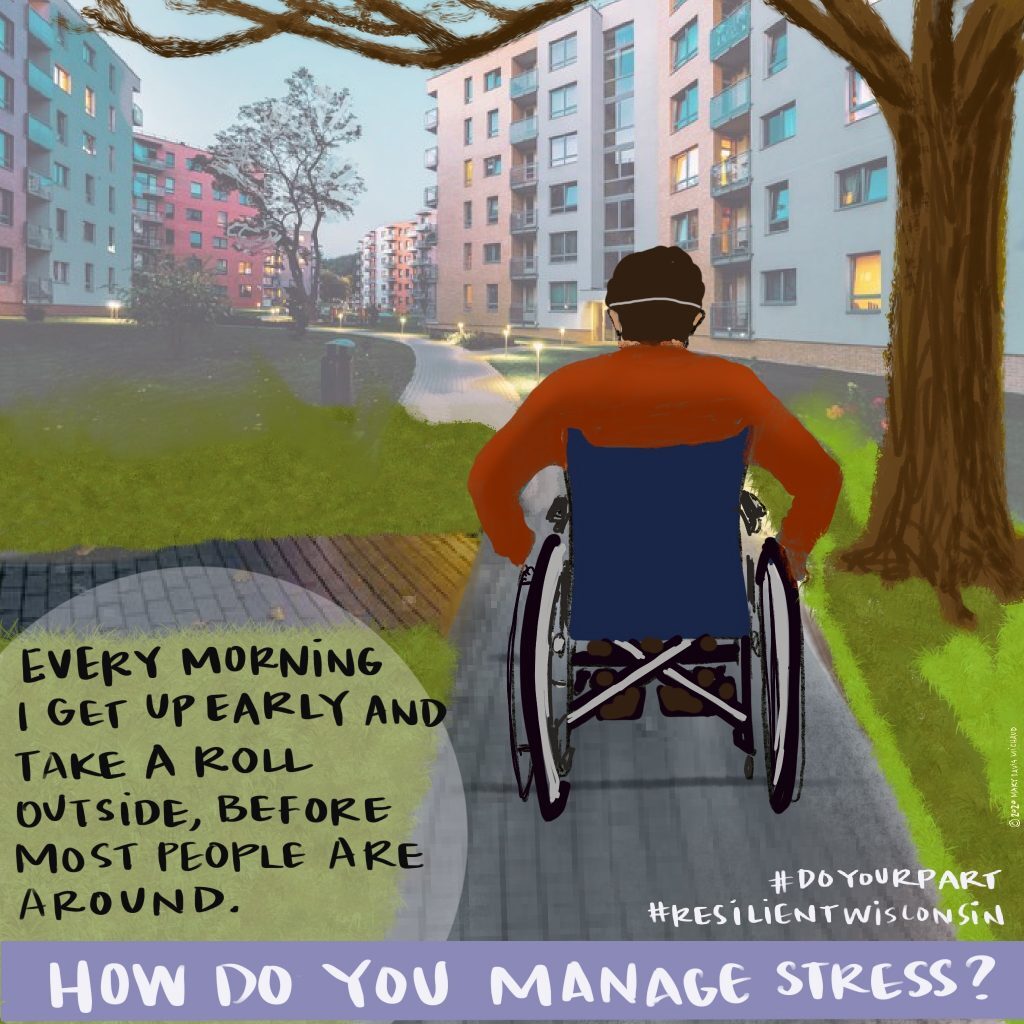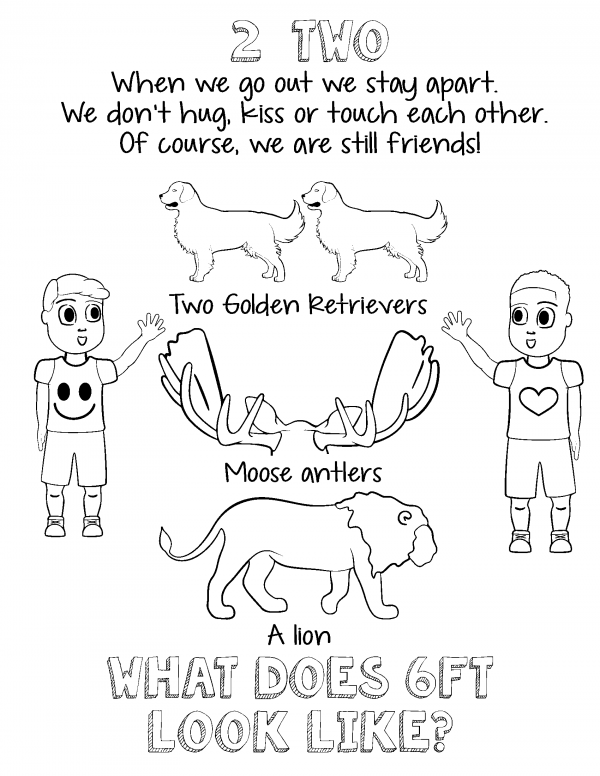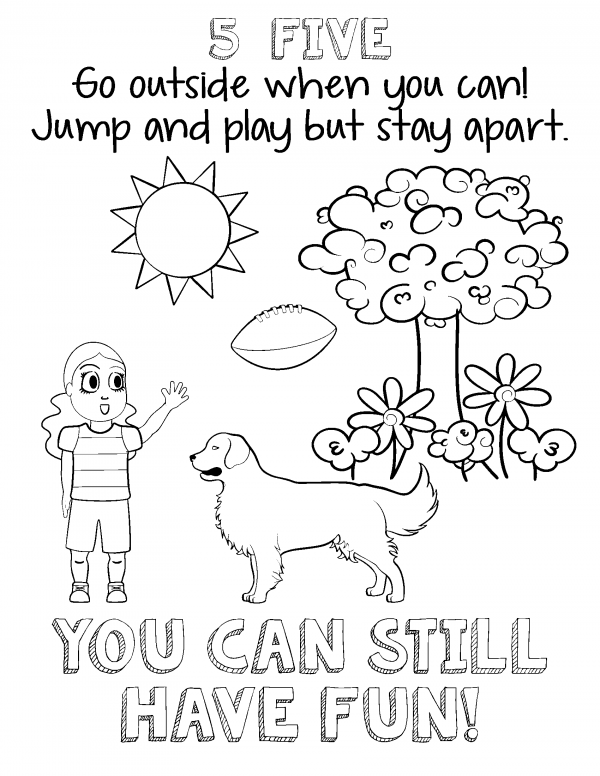This project is an excellent example of the benefits of art in difficult times. Similar to the other projects presented in the arts section, this series of projects provides hope and joy in uncertain times. The drawings by Mary Michaud are especially meant to help people cheer up and celebrate the little things during the pandemic. They are meant to be accessible to all audiences, and remind people to mentally check-in. This can be especially helpful to working parents who are constantly going and giving, and likely not doing much for themselves. The coloring book pages serve as an educational tool for kids who are especially confused by all the changes going on right now. The fun and interactive visualizations provide a fun and comforting way for kids to learn about something unknown and potentially scary. The act of coloring in itself can be a way to relieve stress. How might coloring and other forms of creative expression be incorporated into online schooling to promote a healthy and happy atmosphere?
—
Grauvogl, Ann. “Artists Find Ways to Help Families Get Through Coronavirus Pandemic.” Global Health Institute: University of Wisconsin-Madison, 22 April 2020. https://ghi.wisc.edu/artists-find-ways-to-help-families-get-through-coronavirus-pandemic/
“Santino’s coloring pages are one of three art projects—supported by the University of Wisconsin-Madison “Do Your Part” Communication Collaborative for COVID-19 Response, the Global Health Institute (GHI) and the School of Human Ecology (SoHE)—to help children and adults navigate a COVID-19 world.”
“The projects are designed especially for those facing special challenges, including children and essential workers.
“’People find healing and comfort in the arts,’ DiPrete Brown says. ‘It’s how we reimagine the future, and this will be essential for resilience and well-being as we go forward. We’ll need art, and thankfully it is inside us.’”
Will Santino: Arts, Stories and Cartooning
“I didn’t intentionally say, ‘I’m drawing cartoons because they’re fun and easy, and I need a break from reality,’ but, in retrospect that’s what happened,” Santino says.
“My goal as an artist has always been sharing stories and ideas and worlds,” Santino says. “People like humor, they like silliness. . .”
The COVID project began on a sunny day in his backyard. “What do kids like?”
Mary Michaud: A Place to Pause and Take a Breath
“Mary Michaud’s drawings are meant to give you a chance to take a breath, regroup and celebrate the small things that can make a difference. Her nine drawings get it: These times are very unusual and stressful. But even more, the drawings show everyday people getting through COVID-19 in simple but profound ways.”
“Michaud hopes the drawings invite people into a conversation about the things they are already doing or can try to make life better during the pandemic.”
UW Students: Helping Children Understand
“We wanted to find a cool way to target younger audiences,” Waldo says. The book takes 10 messages developed by the Do Your Part task force and translates them into language appropriate for children in kindergarten through second grade.
Children may not understand what’s safe and what’s not, and the book will focus especially on physical distancing. The goal is to use positive language, Waldo says. Instead of “you can’t go outside,” for example, it will encourage kids to play outside but stay further away from their friends to keep everyone safe.
“A lot of times with something so complex, even adults have a hard time understanding. This will be a simple way for parents to talk to their kids about the virus.”

